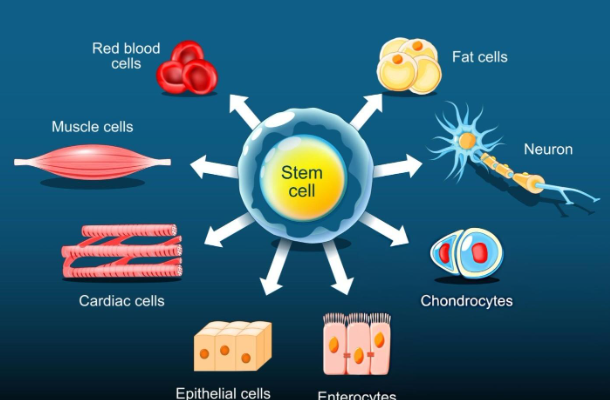Something remarkable is happening in medicine right now. Doctors are using our body’s own repair system to fix problems that seemed impossible just a few years ago.
This isn’t science fiction… it’s happening TODAY in clinics around the world.
What Makes Stem Cells So Special?
Think of stem cells as your body’s master keys. They can become almost any type of cell your body needs. Bone cells. Muscle cells. Even nerve cells.
Your body already uses these cells to heal cuts and broken bones. But here’s the thing – sometimes it needs help. That’s where stem cell therapy comes in.
Here’s how it works:
- Doctors collect healthy stem cells
- They prepare these cells in a lab
- The cells get injected where healing is needed
- Your body uses them to rebuild damaged tissue
Pretty SIMPLE, right? But the results can be life-changing.
Why Now? What’s Changed?
Several things make stem cell therapy more important today than ever before:
-
Better Technology
Modern labs can process stem cells more effectively. The cells survive better. They work faster. Success rates keep climbing.
-
More Research
Scientists publish new studies every month. We understand which conditions respond best. We know how to improve outcomes.
-
Easier Access
Treatment used to require expensive trips to specialized centers. Now? Many local doctors offer these services. Clinics like R3 stem cell therapy Mexico clinic make advanced treatments available to more patients than ever before.
Who Benefits Most?
| Condition | Success Rate | Recovery Time |
|---|---|---|
| Joint Pain | 85-90% | 3-6 months |
| Sports Injuries | 80-85% | 2-4 months |
| Arthritis | 70-80% | 4-8 months |
| Tendon Problems | 75-85% | 3-5 months |
NOTE: Results vary by individual case and treatment approach
The numbers tell the story. Most patients see real improvement. Many avoid surgery completely.
What Actually Happens During Treatment?
Forget everything you’ve seen in movies. Real stem cell therapy is surprisingly straightforward.
The Process:
- Collection – Cells come from your own fat or bone marrow
- Processing – Lab technicians prepare the cells
- Injection – Doctor places cells exactly where needed
- Healing – Your body does the rest over several weeks
Most patients go home the same day. Some feel better within days. Full results typically show up in 2-3 months.
Different Types, Different Benefits
Not all stem cell treatments are the same. Here’s what you need to know:
-
Autologous Treatment
Uses YOUR own cells. No rejection risk. Most common approach.
-
Mesenchymal Stem Cells
Come from fat or bone marrow. Great for joints and soft tissue.
-
PRP Enhancement
Adds platelet-rich plasma. Boosts healing signals.
-
Combination Therapy
Mixes different approaches. Often gives best results.
The Science Behind the Success
Recent studies show impressive results:
- Joint pain: 9 out of 10 patients report significant improvement
- Athletic injuries: Return to activity 60% faster than traditional treatment
- Chronic conditions: Many patients reduce pain medication by half
One major study followed 500 patients for two years. Results? 82% were still pain-free at the two-year mark.
What Makes Treatment Successful?
Several factors determine how well stem cell therapy works:
Patient Factors:
- Age (younger patients typically respond better)
- Overall health
- Severity of condition
- Lifestyle choices
Treatment Factors:
- Cell quality and quantity
- Injection technique
- Follow-up care
- Rehabilitation program
The Future Looks Bright
Researchers are working on exciting developments:
New Cell Sources
Scientists are testing cells from umbilical cords and placental tissue. These cells might work even better than current options.
Better Delivery Methods
New injection techniques get cells exactly where they need to go. This improves results and reduces side effects.
Combination Treatments
Mixing stem cells with growth factors and other therapies. Early results look promising.
Preventive Applications
Using stem cells before problems get serious. This could prevent many injuries and conditions.
What Patients Need to Know
Thinking about stem cell therapy? Here’s practical advice:
Do Your Research Find experienced doctors. Check credentials. Ask about success rates for YOUR specific condition.
Ask the Right Questions
- How many procedures have you done?
- What’s your success rate?
- What should I expect?
- What are the risks?
Consider Timing Earlier treatment often works better. Don’t wait until damage is severe.
Plan for Recovery Most patients need some downtime. Physical therapy often helps maximize results.
Frequently Asked Questions
Is it safe?
- When performed by qualified doctors, stem cell therapy has an excellent safety record. Side effects are typically mild and temporary.
How long do results last?”
- Many patients experience lasting improvement. Some need follow-up treatments after several years.
Does insurance cover it?
- Coverage varies. Many patients find the investment worthwhile given the results.
Am I too old?
- Age isn’t necessarily a barrier. Even patients in their 80s have had successful treatments.
The Bottom Line
Stem cell therapy represents a fundamental shift in medicine. Instead of just treating symptoms, we’re actually repairing damage.
The technology keeps improving. Success rates keep climbing. Access keeps expanding.
For many patients, it’s not just about feeling better… it’s about getting their life back.
That’s why stem cell therapy matters now more than ever. It offers hope where traditional medicine falls short. It provides solutions that actually address the root cause of problems.
The future of medicine is already here. And it’s working inside your body right now.
Ready to learn if stem cell therapy could help you? Talk to a qualified healthcare provider about your specific situation. The conversation could change everything.

